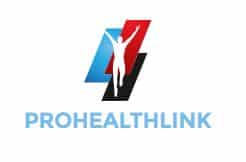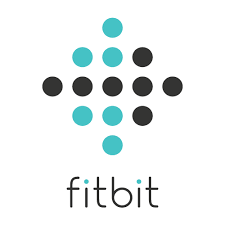Table of Contents
How To Reduce The Aging Process In Adults Over 50
There are many physiological and neurological changes accompanying aging, and four of these will be briefly discussed: frailty and three of chronic diseases, heart disease, cancer, and Alzheimer’s disease (AD). Frailty is characterized by weakness (attributed in part to sarcopenia, i.e., muscle atrophy, and reduced muscle function), slowness, exhaustion, a low activity level, and unintentional weight loss, and often, osteoporosis. Frailty affects some 10% of the population, and for adults older than 85 years, the prevalence is approximately 25%.
Risk of Disease

Aging is a major risk factor for all chronic diseases as exemplified by the statistic that 70% of individuals older than 65 have two or more chronic diseases. The six major causes of death in the U.S. population (from 2014 data, the most recent year for which accurate results are available) were, in decreasing order, heart disease, cancer, chronic lower respiratory diseases, accidents, stroke, and AD. Heart disease, cancer, and AD were responsible for the deaths of 614,348, 591,699, and 93,541 Americans, respectively. Aside from unintentional accidents and infectious disease, older Americans die from these and other chronic diseases. For heart disease and cancer (and most of the other chronic diseases), mortality is relatively low until approximately 50 to 60 years and then increases exponentially. With AD, mortality is low until approximately 65 years, after which there also is an exponential increase in the number of deaths.
Some 70% of Americans ages 60 to 79 have some form of heart disease, a number that increases to approximately 80% for those age 80 years and older. This can be attributed to most, if not all, of the drivers listed. Cancer represents many diseases and has many causes, most of which also arise from the drivers of aging. The American Cancer Society estimated there would be nearly 1.7 million cases of new cancer in 2017 and more than 600,000 cancer-related deaths. Some 5.5 million Americans have AD, and of these, 5.3 million are age 65 and older. Of those individuals with AD, approximately 82% are 75 and older.
Ways to Slow the Aging Process
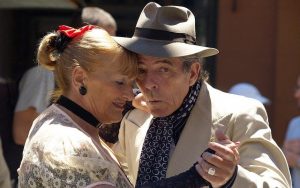
Because the drivers of aging have been shown to cause chronic diseases, frailty, sarcopenia, dementia, and other adverse conditions, exhaustive investigations have been conducted on ways to lessen, the impact of these devastating, by and large, end-of-life events. The best known and documented strategy encompasses physical activity and exercise.
The American College of Sports Medicine has published a position stand on exercise programs for older adults, and sports physiologists and exercise trainers have directed their clients along with this or similar regimens for years. The results from numerous scientific studies are overwhelmingly positive and indisputable regarding the beneficial effects of physical activity and exercise in the aging population, resulting in measurable and highly positive outcomes, both on physical fitness and cognition, and diminishing many of the adverse effects of aging.
Fitness Program 1

General Fitness Program for an Older Population
To accommodate clients with restricted mobility or those with health conditions that prohibit a full program, adjustments can be made as appropriate. The target of such a regimen is to minimize as fully as possible the adverse effects of the drivers of aging, and it is now well documented that these and other physical activity and exercise programs are effective in this regard.
- Moderate-intensity aerobic exercise for 150 min/wk with sessions lasting 30 to 60 minutes (3 or 5 d/wk). High-intensity aerobic activities should be at least 10 minutes in duration and total 75 min/wk for a minimum of 3 d/wk. A combination of moderate and vigorous-intensity exercise 3 to 5 d/wk often is effective. Sessions could begin at 10 to 20 minutes’ duration and then be gradually increased to the desired maximum. Goals will differ depending on the ability of participants.
- The major muscle groups should be engaged in resistance training 2 or 3 d/wk, with each training exercise involving 2 to 4 sets with 8 to 12 repetitions per set and a 2- to 3-minute rest interval between sets. Weight-bearing calisthenics, stair climbing, and other activities that use the major muscle groups can be substituted if necessary.
- Flexibility and balance exercises should be part of the program and can be incorporated into the sessions on aerobic exercises and/or resistance training a minimum of 2 or 3 d/wk. It is recommended that each joint receive a total of 1-minute flexibility exercise.
The instructor should emphasize that these programs be augmented with physical activity and reduced sitting time throughout the day. A good guideline for those capable is a minimum of 10,000 steps per day.
Exercise Program 2

Exercise and Telomerase Activity/Maintaining DNA
Telomeres (repeating sequences of DNA and six proteins) function to maintain chromosomal stability. A survey of the effects of exercise on telomere length and telomerase activity (telomerase being the enzyme responsible for maintaining telomere length) has been conducted, with the following aerobic exercises being shown to be effective. The chosen moderate- or high-intensity aerobic exercise should be performed 3 to 4 times per week for a minimum of 6 months, and each performance should be preceded by a 10-minute warm-up and a shorter cool-down.
- Walking: Four intervals of the fast walk with each interval involving a fast walk for 3 minutes (at a level of 6 to 7 on an exertion scale of 1 to 10) followed by a gentle stroll of 3 minutes. OR
- Running: Four intervals of fast running with each interval involving a fast run for 3 minutes and then an easy run for 3 minutes. OR
- Walking or Running: Three times per week of either a fast walk or run at approximately 60% of the maximum ability for 40 minutes.
Fitness Program 3
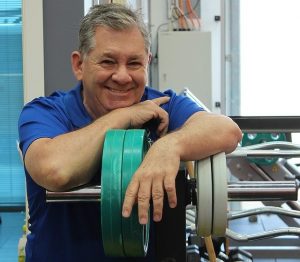
Overcoming, Minimizing, or at Least Delaying Frailty
Monday, Wednesday, Friday: 10 minutes warm-up with stretching; 10 minutes balance exercises; 40 minutes involving mild aerobic exercise interspersed with arm movements: 5 minutes walking, 20 reps arm vertical movements, 10 minutes walking, 20 reps arm rotations, walking or some stair climbing until 40 minutes is reached; 5 minutes stretching.
Tuesday, Thursday: The same as MWF except substitute aerobic exercises with some form of strength training, for example with elastic bands and mini ball and small-ball squeezing.
Months 1 and 2: 25% maximum heart rate (HRmax); months 3 and 4: 50% HRmax; months 5 and 6: 75% HRmax.
Reps can be altered after month 1, and more information on the specific warm-up, proprioception/balance, stretching, and aerobic and strength training can be found in the original article.
Another recent study was conducted on two age groups, persons age 18 to 30 years and 65 to 80 years, but the following discussion is limited to the older population. Using sophisticated molecular and cellular measurements, it was demonstrated that the age-dependent decline in skeletal muscle protein synthesis and mitochondrial number/function can at least be partially reversed by exercise, thus enhancing muscle hypertrophy and cellular energetics, respectively. Improvements were found in fat-free body mass, insulin sensitivity, mitochondrial respiration, cardiorespiratory fitness, increased mitochondrial and skeletal muscle protein biosynthesis, and increased messenger ribonucleic acid (mRNA) expression, mRNAs being intermediates in the production of proteins from genes.
The loss of muscle mass (atrophy) and function is a hallmark of aging, due in part to reduced muscle stem cell number, arising from DNA damage, epigenetic changes, accumulation of senescent cells, and alterations in mitochondria and protein homeostasis. These age-dependent changes lead to the loss of type I and II myofibers, as well as the atrophy of type II myofibers, accounting for much of the observed muscle loss. Aerobic and resistance training have a multitude of positive effects on muscle, including, but certainly not limited to, metabolic alterations, vascular regeneration, enhanced mitochondrial function, ribosome biogenesis, enhancement of insulin sensitivity (in part by increasing the number of glucose transporters responsible for relocating glucose from the blood into muscle cells), and hypertrophy of fast-twitch myofibers (predominantly type II).
Exercise Program 4
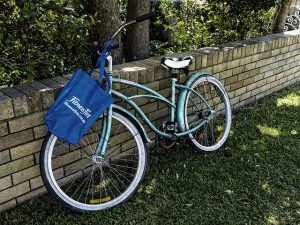
Training Modalities to Enhance Lean Body Mass, Insulin Sensitivity, Mitochondrial Respiration, and Cardiorespiratory Fitness in a Population Age 65 to 80 Years
The following 12-week exercise regimens, high-intensity aerobic interval training, resistance training, and combined high-intensity aerobic interval training and resistance training, were found to be effective in overcoming and reversing a number of age-dependent parameters. These protocols, modified as necessary depending on the equipment and measuring devices available, can be implemented after a short introduction to the overall program and the proven outcomes.
The exercise physiologist or fitness trainer leading the group should emphasize the importance of overcoming and partially reversing the age-dependent decline in mitochondrial function, explaining that mitochondria are responsible for the great majority of ATP production in the body, ATP is required for the production of cellular energy. After a 10-minute warm-up on a treadmill, elliptical machine, or bike, participants would adhere to the following regimen, always with the instructor present.
High-Intensity Aerobic Interval Training (12 weeks)
Five d/wk with 3 days (MWF) of intervals using an electronically braked cycle ergometer and 2 days (TuTh) of treadmill (motorized) walking.
MWF, stationary cycle: 10-minute warm-up, then four cycles of 4-minute high-intensity intervals (>90%) with each followed by a 3-minute rest with light pedaling at zero loads, and then a 5-minute cool-down.
TuTh, treadmill: 10-minute warm-up followed by 45 minutes at a walking pace of 2 to 4 mph at an incline at 70% VO2peak, and then a 5-minute cooldown.
Resistance Training (12 weeks)
Four d/wk with 2 days (MTh) of lower body exercises and 2 days (TuF) of upper body exercises. After appropriate instruction on lifting technique, the participants perform 8 to 12 repetitions per exercise with a 1-minute rest between sets.
Week 1: two sets of each exercise; week 2: three sets of each exercise; weeks 3 to 12: four sets of each exercise.
When good form can be maintained for four sets, weights should be increased.
MTh: calf raise, leg press, lunge, leg extension, leg curl, and abdominal crunch.
TuF: horizontal chest press, incline chest press, biceps curl, triceps extension, lat pull-down, seated row, and lateral raise.
Combined Training (12 weeks)
Five d/wk (M–F) beginning with a 5-minute warm-up that is followed by 30 minutes of cycling each day and then 30 minutes of weight lifting on 4 days.
Cycling: 20 minutes each of 5 days at 70% VO2peak followed by a 5-minute cool-down.
Weight lifting: 30 minutes each of 4 days with the lower body (abdominal crunch, leg press, leg extension, and leg curls) on MTh and upper body (biceps curl, triceps extension, chest press, and lat pull-down) on TuF.
Numerous studies have been reported showing the benefits of physical activity and exercise in delaying or lessening dementia and improving cognitive outcomes in patients with AD. In one recent investigation, improvements were noted in cardiorespiratory fitness and memory performance, along with a reduction in hippocampal atrophy, after a 26-week aerobic exercise program for individuals with early AD. In another study of patients with early AD, it was found that a 16-week aerobic exercise program led to improvements in cardiorespiratory function, single-task physical performance, dual-task performance, and exercise self-efficacy.
Exercise Program 5
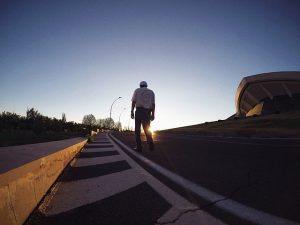
Aerobic Exercises for Individuals with Mild (Early) AD
Various studies have demonstrated that aerobic exercise is beneficial to individuals with early AD. {If desired, VO2peak and maximum heart rate (HRmax) can be measured before and after the program; if these parameters are not readily measurable, then estimates can be made: HRmax (220 − age) or [208 − (0.7 × age)], and VO2peak (HRmax ÷ HRresting).}
Caution is recommended in working with adults having early AD, and the approval of a physician should precede participants (either home dwelling or community-dwelling) beginning an extended aerobic regimen. The following two programs, A (24) and B (25), have been documented to have beneficial effects on individuals having mild AD. In addition to programs such as these that involve physical exertion, studies have shown that cognitive exercises also are effective in delaying or minimizing the onset and debilitating effects of AD.
A. Exercise training included 20 minutes on a treadmill at 0% grade and 1.7 mph followed by an increase in both grade and speed to yield 50% to 70% HRmax. When the class is capable of achieving 40 minutes of continuous exercise, the 26-week program can begin. The workload (both speed and grade) can be individualized, and the exercise duration of 150 min/wk can be distributed over three to five sessions, with each session having warm-up and cool-down periods of 5 minutes.
Weeks 1 to 4: achieve a heart rate zone of 40% to 55% HR reserve (HRmax − HRrest).
Weeks 5 to 18: ibid. 50% to 65% HR reserve.
Weeks 19 to 26: ibid. 60% to 75% HR reserve.
B. Weeks 1 to 4: Introduction to aerobic training and strength training of lower extremity muscles (60-minute sessions 3 times per week).
Weeks 5 to 16: Moderate-to-high-intensity aerobic exercise on an ergometer bicycle, cross-trainer, and treadmill at 70% to 80% HRmax done in three periods of 10 minutes each with rests of 2 to 5 minutes in between.
Proper Diet

A good diet, recommended for everyone, is particularly important for the aging population. It has been shown that a Mediterranean diet, as well as a diet promoting consumption of antioxidant-rich and plant-derived foods, aids in maintaining telomere length. Importantly, a healthy lifestyle is essential to maximize the healthspan. This includes diet, physical activity, and exercise while minimizing the exposure to and consumption of hazardous environmental agents. Although sunlight is necessary for vitamin D metabolism, care should be taken to avoid overexposure.
Research has shown that one should be committed to daily physical activity and a well-balanced exercise regimen, healthy diet, and healthy lifestyle. A saying attributed to the Greek physician, Hippocrates, in approximately 450 BCE, holds true today as it did some two and a half millennia ago: “If we could give every individual the right amount of nourishment and exercise, not too little and not too much, we would have found the safest way to health.”
Researchers in geroscience have identified several molecular and cellular drivers that are responsible for the aging phenotype. It has been conclusively demonstrated that physical activity and a well-structured exercise regimen can overcome many of the deleterious effects of aging. Although there is interest in the possibility of pharmacological intervention to delay or obviate the onset of chronic diseases, considerable research and clinical trials are necessary before it is known whether they will prove beneficial or not.
References
1. Fries JF. Aging, natural death, and the compression of morbidity. New Engl J Med. 1980;303(3):130–135. [http://dx.doi.org/10.1590/S0042-96862002000300012].
- Cited Here |
- PubMed | CrossRef
2. Seals DR, Justice JN, LaRocca TJ. Physiological geroscience: targeting function to increase healthspan and achieve optimal longevity. J Physiol. 2016;594(8):2001–24. [doi:10.1113/jphysiol.2014.282665].
3. Sierra F. The emergence of geroscience as an interdisciplinary approach to the enhancement of health span and life span. In: Olshansky SJ, Martin GM, Kirkland JL, editors. Aging: The Longevity Dividend. Cold Spring Harbor (NY): Cold Spring Harbor Laboratory Press; 2016, p. 1–13. [ISBN 978-1-62182-163-2 paper, Cold Spring Harb Perspect Med doi:10.1101/cshperspect.a025163].
4. Fried LP. Interventions for human frailty: physical activity as a model. In: Olshansky SJ, Martin GM, Kirkland JL, editors. Aging: The Longevity Dividend. Cold Spring Harbor (NY): Cold Spring Harbor Laboratory Press; 2016, p. 135–48. [ISBN 978-1-62182-163-2 paper, Cold Spring Harb Perspect Med doi:10.1101/cshperspect.a025916].
5. Viña J, Rodriguez-Mañas L, Salvador-Pascual A, Tarazona-Santabalbina FJ, Gomez-Cabrera MC. Exercise: the lifelong supplement for healthy ageing and slowing down the onset of frailty. J Physiol. 2016;594(8):1989–99. [doi:10.1113/JP270536].
6. Centers for Disease Control and Prevention Web site [Internet]. Atlanta (GA): Centers for Disease Control and Prevention; [cited 2017 July 8]. Available from: https://www.cdc.gov/nchs/data/nvsr/nvsr65/nvsr65_04. [Prepared by Kochanek KD, Murphy SL, Tejada-Vera B. Deaths: Final data for 2014. National Vital Statistics Reports. 2016; 65(4): p. 34, Table 9].
7. Benjamin EJ, Blaha MJ, Chiuve SE, et al. Heart disease and stroke statistics—2017 update: a report from the American Heart Association. Circulation [Internet]. 2017;135(10):e146–e603. [doi:10.1161/CIR.0000000000000485].
8. American Cancer Society Web site [Internet]. Atlanta (GA): American Cancer Society; [cited 2017 July 8]. Available from: https://www.cancer.org/. [See Cancer Facts & Figures 2017, Table 1. Estimated Number of New Cancer Cases and Deaths by Sex, US, 2017. p. 4, Table 1].
9. Alzheimer’s Association: Alzheimer’s Disease and Dementia Web site [Internet]. Chicago (IL): Alzheimer’s Association: Alzheimer’s Association and Dementia; [cited 2017 July 8]. Available from: www.alz.org/ [see Alzheimer’s disease & dementia, Facts and figures. See also Alzheimer’s Association Report 2017 in Deaths: Contributions by Gauglen J, James B, Johnson T, Weuve J. Final data for 2014. Alzheimer’s & Dementia. 2017; 13(4): 325–373. http://dx.doi.org/10.1016/j.alz.2017.02.001].
10. Riebe D, Ehrman JK, Liguori L, Magal M. ACSM’s Guidelines for Exercise Testing and Prescription. 10th edition. Philadelphia (PA): Wolters Kluwer; 2017. 472 p.
11. Chodzko-Zajko WJ, Proctor DN, Singh MAF, et al. American College of Sports Medicine position stand. Exercise and physical activity for older adults. Med Sci Sports Exer. 2009;41(7):1510–30.
12. Bauman A, Merom D, Bull FC, Buchner DM, Fiatarone Singh MA. Updating the evidence for physical activity: summative reviews of the epidemiological evidence, prevalence, and interventions to promote “active aging.” Gerontologist 2016;56(S2):S268–80. [doi:10.1093/geront/gnw031].
13. Blackburn E, Epel E. The Telomere Effect. New York (NY): Grand Central Publishing; 2017. 416 p.
14. Denham J, O’Brien BJ, Charchar FJ. Telomere length maintenance and cardio-metabolic disease prevention through exercise training. Sports Med. 2016;46(9):1213–37. [doi:10.1007/s40279-016-0482-4].
- Cited Here |
- PubMed | CrossRef
15. Tarazona-Santabalbina FJ, Gómez-Cabrera MC, Pérez-Ros P, et al. A multicomponent exercise intervention that reverses frailty and improves cognition, emotion, and social networking in the community-dwelling frail elderly: a randomized clinical trial. JAMDA 2016;17(5):426–33. [http://dx.doi.org/10.1016/j.jamda.2016.01.019].
16. Pedersen BK, Saltin B. Exercise as medicine-evidence for prescribing exercise as therapy in 26 different chronic diseases. Scand J Med Sci Sports. 2015;25(suppl. 3):1–72. [doi:10.1111/sms.12581].
17. Roh J, Rhee J, Chaudhari V, Rosenzweig A. The role of exercise in cardiac aging. Circ Res. 2016;118(2):279–95. [https://doi.org/10.1161,CIRCRESAHA.115.305250].
18. Moore SC, Lee IM, Weiderpass E, et al. Association of leisure-time physical activity with risk of 26 types of cancer in 1.44 million adults. JAMA Int Med. 2016;176(6):816–25. [doi:10.1001/jamainternmed.2016.1548].
19. Raji CA, Merrill DA, Eyre H, et al. Longitudinal relationships between caloric expenditure and gray matter in the cardiovascular health study. J Alzheimer’s Dis. 2016;52(2):719–29. [doi:10.3233/JAD-160057].
- Cited Here |
- PubMed | CrossRef
20. Shen Y, Li R. What do we know from clinical trials on exercise and Alzheimer’s disease? J Sport Health Sci. 2016;5(4):397–9. [ http://dx.doi.org/10.1016/j.jshs.2016.10.002].
21. Sleiman SF, Henry J, Al-Haddad R, et al. Exercise promotes the expression of brain derived neurotrophic factor (BDNF) through the action of the ketone body β-hydroxybutyrate. eLife. 2016. [cited 2017 July 8]; 5:e15092. [doi:10.7554/eLife.15092].
22. Lindholm ME, Giacomello S, Solnestam BW, et al. The impact of endurance training on human skeletal muscle memory, global isoform expression and novel transcripts. PLoS Genent. 2016 [cited 2017 July 8]; 12(9): e1006294. [doi:10.1371/journal.pgen.1006294].
23. Robinson MM, Dasari S, Konopka AR, et al. Enhanced protein translation underlies improved metabolic and physical adaptations to different exercise training modes in young and old adults. Cell Metab. 2017;25(3):581–92 (see also Supplemental Information). [http://dx.doi.org/10.1016/j.cmet.2017.02.009].
24. Morris JK, Vidoni ED, Johnson DK, et al. Aerobic exercise for Alzheimer’s disease: a randomized controlled pilot trial. PLoS ONE. 2017;12(2):e0170547. [doi:10.1371/journal.pone.0170547].
- Cited Here |
- PubMed | CrossRef
25. Sobol NA, Hoffmann K, Frederiksen KS, et al. Effect of aerobic exercise on physical performance in patients with Alzheimer’s disease. Alzheimers Dement. 2016;12(12):1207–15. [http://dx.doi.org/10.1016/j.jalz.2016.05.004].
26. Boccardi V, Paolisso G, Mecocci P. Nutrition and lifestyle in healthy aging: the telomerase challenge. Aging. 2016;8(1):12–5. [doi:10.18632/aging.100886].
27. Freitas-Simoes TM, Ros E, Sala-Vila A. Nutrients, foods, dietary patterns and telomere length: update of epidemiological studies and randomized trials. Metabolism: Clin Experim. 2016;65(4):406–15. [http://dx.doi.org/10.1016/j.metabol.2015.11.004].
28. Soria-Valles C, López-Otín C. iPSCs: on the road to reprogramming aging. Trends Mol Med. 2016;22(8):713–24. [http://dx.doi.org/10.1016/j.molmed.2016.05.010].
- Cited Here |
- PubMed | CrossRef
29. Takahashi K, Yamananka S. A decade of transcription factor-mediated reprogramming to pluripotency. Nat Rev Mol Cell Biol. 2016;17(3):183–93. [doi:10.1038/nrm.2016.8].
- Cited Here |
- PubMed | CrossRef
30. Kirkland JL. Translating the science of aging into therapeutic interventions. In: Olshansky SJ, Martin GM, Kirkland JL, editors. Aging: The Longevity Dividend. Cold Spring Harbor (NY): Cold Spring Harbor Laboratory Press; 2016. p. 121–34. [ISBN 978-1-62182-163-2 paper, Cold Spring Harb Perspect Med doi:10.1101/cshperspect.a025908].
31. Barzilai N, Crandall JP, Kritchevsky SB, Espeland MA. Metformin as a tool to target aging. Cell Metab. 2016;23(6):1060–5. [http://dx.doi.org/10.1016/j.cmet.2016.05.011].
32. Kennedy BK, Lamming DW. The mechanistic target of rapamycin: the grand conductor of metabolism and aging. Cell Metab. 2016;23(6):990–1003. [http://dx.doi.org/10.1016/j.cmet.2016.05.009].
33. Sevigny J, Chiao P, Bussière T, et al. The antibody aducanumab reduces Aβ plaques in Alzheimer’s disease. Nature. 2016;537(7618):50–6. [doi:10.1038/nature19323].
34. National Institutes of Health Web site [Internet]. Bethesda (MD): National Institutes of Health; [cited 2017 July 8]. Available from: https://stemcells.nih.gov/info/basics.htm.
35. Garber CE, Blissmer B, Deschenes MR, et al. American College of Sports Medicine position stand. Quantity and quality of exercise for developing and maintaining cardiorespiratory, musculoskeletal, and neuromotor fitness in apparently healthy adults: guidance for prescribing. Med Sci Sports Exer. 2011;43(7):1334–59. [doi: 10.1249/MSS.0b013e318213fefb].
36. Xu Y, Cui J, Puett D. Cancer Bioinformatics. New York (NY): Springer; 2014. 368 p.
